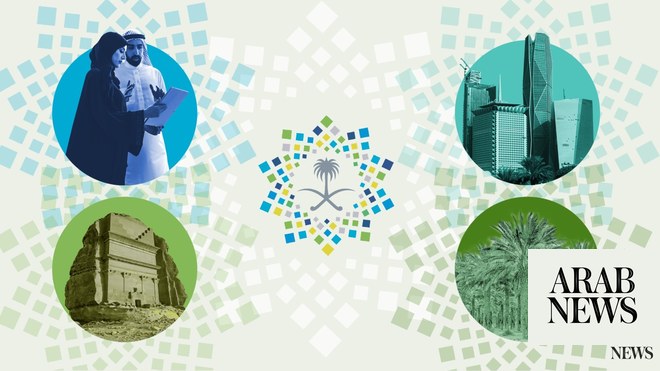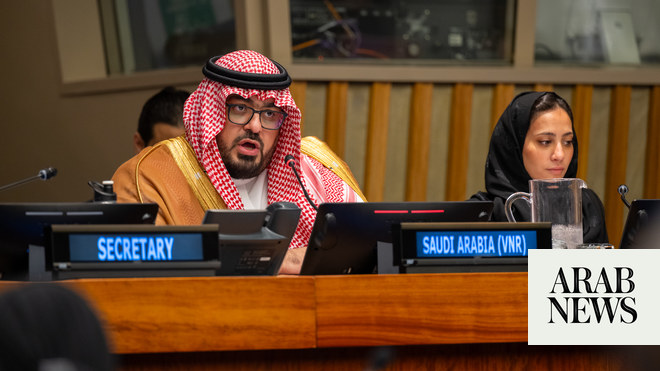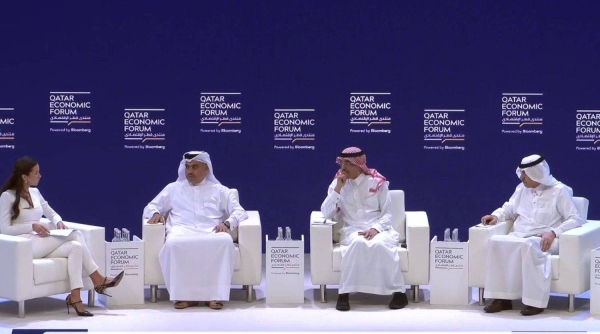
In 2016, Crown Prince Mohammed bin Salman launched Vision 2030, an agenda for Saudi Arabia’s national development. It is steering the country toward long-term economic, social and environmental outcomes to achieve sustainable social and economic development.
In his foreword to Vision 2030, Crown Prince Mohammed wrote: “Our Vision is a strong, thriving, and stable Saudi Arabia that provides opportunity for all. Our Vision is a tolerant country with Islam as its constitution and moderation as its method.”
It prioritizes economic diversification and transformation, the long-term development of human capital, the empowerment of women, uplifting living standards, promoting a healthy life for citizens, and maintaining the religious and cultural traditions of the country.
Vision 2030 encourages the reimagining of the Saudi economy. Instead of Saudi Arabia being dependent on oil, the wealth of the country is lodged in people; in the skills, intelligence and energy of the people, and future economic growth will be spurred by investment in them as the country’s key resource.
“We are not dependent solely on oil for our energy needs. Gold, phosphate, uranium, and many other valuable minerals are found beneath our lands. But our real wealth lies in the ambition of our people and the potential of our younger generation. They are our nation’s pride and the architects of our future,” Crown Prince Mohammed wrote.
In 2015, the UN General Assembly formally adopted the 2030 Agenda for Sustainable Development. This contains a set of Sustainable Development Goals (SDGs). The agenda is a project for self-development by a global partnership of the world’s nations. In the very best sense of the word, it is utopian. It offers a concept of security, growth, and fulfillment that countries can see as a dream but also as an experiment in human solidarity, containing the promise of a new level of cultural development. Getting a consensus about pursuing the SDGs and a shared understanding of a better future for all is an amazing achievement. But, make no mistake, it is proving to be a struggle for countries to deliver these goals in time for 2030.
Saudi Arabia is committed to implementing the UN SDGs. But how can it manage to deliver Vision 2030 and the SDGs? One answer is that it will be possible if there are linkages and alignments between Vision 2030 and the SDGs. For example, the Kingdom’s 2018 review of its SDG progress stated: “One key program of the Vision, namely life quality, has direct relevance to the sustainable development goals. In addition, Saudi Arabia has developed several strategies and plans that are bound to promote the 17 goals of sustainable development.”
Of course, Saudi Arabia can expect some successes and some challenges in delivering Vision 2030 and the UN SDGs.
It is possible to trawl through articles by management consultants and academic research papers and identify many different factors that may prove critical to the realization of Vision 2030. Factors that come to mind include: The quality of implementation planning, the capabilities for experimentation and learning, change management skills, the ability to link budgets and strategic priorities, cooperation and coordination within organizations, alignment of plans and goals, and so on. But it is equally important to reflect on Saudi Arabia’s own experiences of many decades of carrying out development planning and (more recently) strategic planning.
Long-term strategic change depends not only on an inspiring vision but also on investment. One of the lessons of reflecting on Saudi Arabia’s experience over the last 10 to 15 years is that the country has done very well in prioritizing total investment (as a percentage of gross domestic product). Countries that have grown very fast (as measured by GDP per capita) — such as China, India, Vietnam and Indonesia — all ensured they had high rates of investment. When we look at the experience of Saudi Arabia, however, the country has not reaped as much growth as it probably ought to have done from the investment it has put into the economy.
Public investments are an important part of the total investment. Governments may need to be selective in the allocation of investment. Perhaps the issue has been one of selecting the right projects or areas for investment.
Alternatively, to get the most from investment, the government may need to have strong strategic state capabilities, which enables what might also be referred to as a whole-of-government approach. The essence of this is a very high level of cooperation and coordination across government to allow long-term visions to be planned and turned into reality.
One of Saudi Arabia’s major strengths is that it has a good track record of well-developed and comprehensive long-term strategic visions. Moreover, this fact is clearly perceived beyond government. Societal stakeholders are very clear that a long-term vision is in place. And there is no mistaking the success the government has had in communicating to society that national development and economic growth are a top priority.
The big challenge for most governments is mobilizing citizens and stakeholders to help with the delivery of long-term visions. This can be seen as governments working as a catalyst or agent of change. The approach to development can then move toward a whole-of-society approach.
Saudi Arabia’s leadership, the National Center for Privatization and Public-Private Partnership, introduced economic policies that paved the way to diversify the Saudi economy. Based on international insolvency standards, the new set of rules and regulations will protect creditors, such as banks, and troubled companies that seek protection, thereby protecting these organizations from arbitrary seizure of their assets.
Reflecting on Saudi Arabia’s situation, it can be said that the public sector will have to play an important role in enabling economic diversification. This means, at the very least, catalyzing change in the infrastructure for doing business generally and the ease of doing business in particular. This is something that government ministers have to address in the years ahead if they are committed to a more significant role for the private sector in creating economic growth — the ministers will need to deliver a more business-friendly environment as an urgent priority.
Strategic transformation and economic diversification are achievable through the creation of long-term strategic visions backed by the government’s increased ability to implement policies for the benefit of the country in achieving Saudi Vision 2030’s goals and objectives. In the face of constraints and challenges like the current pandemic, the Kingdom’s effective and capable leaders are determined to pursue the country’s sustainable and strategic transformation into a diversified economy. They aim to create a society for Saudi citizens that is prosperous because of its diversified economy, and a society that has happy citizens who are satisfied with their lives.
Dr. Turki Faisal Al-Rasheed is the co-author of “Public Governance and Strategic Management Capabilities: Public Governance in the Gulf States,” with Paul Joyce. He is currently writing “Saudi Arabia’s Transformation: Sustainability and Uncertainty,” also with Joyce. It is due to be released during the first quarter of 2021.
Disclaimer: Views expressed by writers in this section are their own and do not necessarily reflect Arab News" point-of-view








